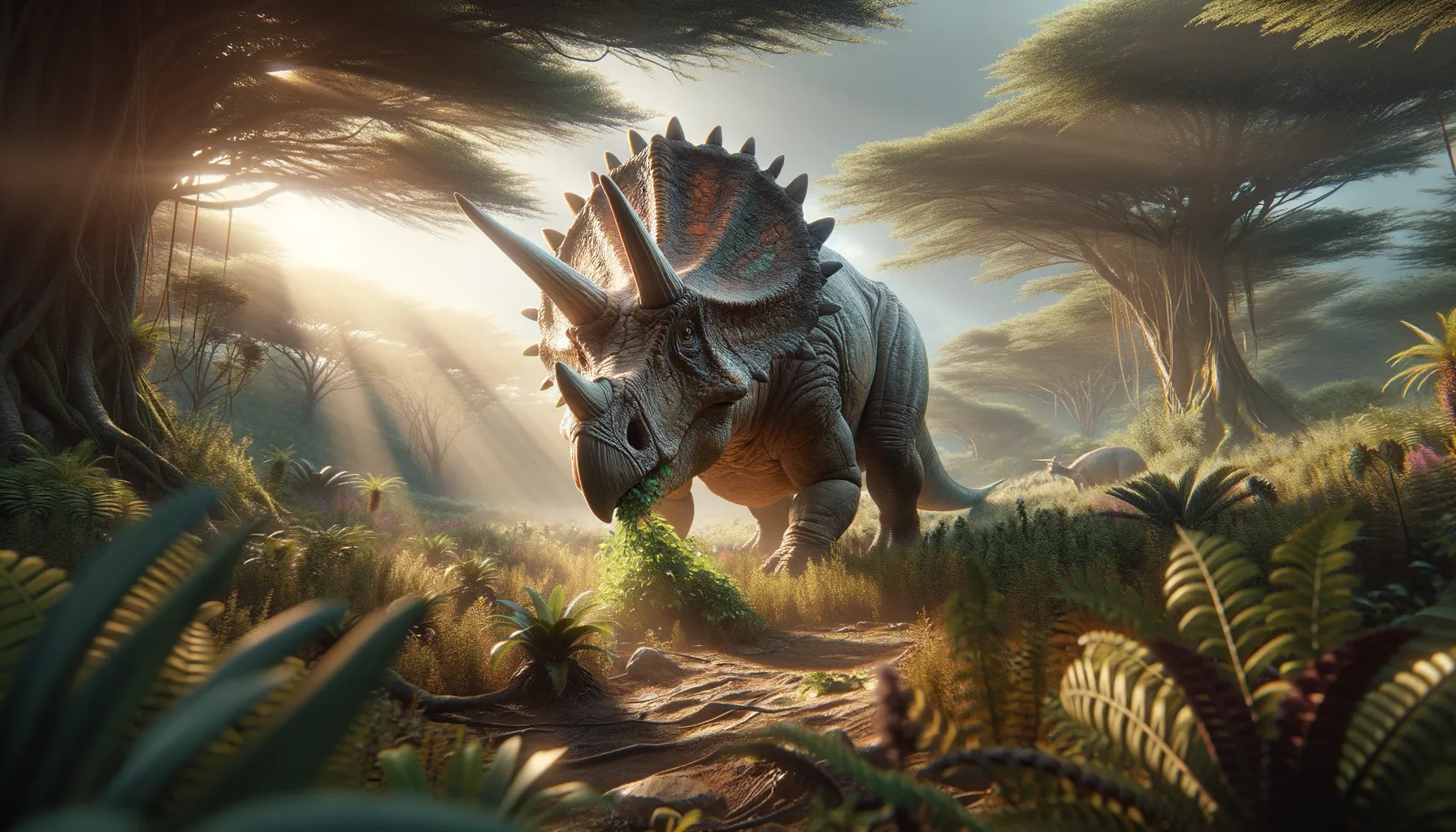
Diceratops
Horns and frills of the Cretaceous lands!
Period
Cretaceous
Length
Up to 25 feet in length.
Height
Around 6 to 8 feet at the shoulder.
Weight
Approximately 3 to 5 tons.
Diceratops was a herbivorous dinosaur characterized by a large frill and two prominent horns. It roamed the Earth during the late Cretaceous period, inhabiting what is now North America. This dinosaur possessed features similar to Triceratops, though its frill and horn structures were distinct. It likely moved in herds and fed on low-lying vegetation. The discovery of Diceratops provides valuable insights into the diversity and evolutionary history of ceratopsian dinosaurs.
Diet
Diceratops was a herbivore, primarily feeding on plants. It foraged for low-lying vegetation such as ferns and cycads. Its beak-like mouth was well-suited for cropping tough plant material.
Hunting
As a herbivore, Diceratops did not hunt prey. Instead, it foraged in groups to protect against predators. Its horns and frill were likely defensive adaptations against carnivorous dinosaurs.
Environmental challenges
Diceratops faced challenges from shifting climates and competition for food. Predation by large theropods was a constant threat. Changes in vegetation due to environmental shifts could impact its food sources and habitat space.
Speed
Moderate; typically not built for high speeds.
Lifespan
Estimated to live several decades.
First discovery
First discovered in the early 20th century.
Fun Facts
- Despite the name, Diceratops only had two prominent horns, unlike its cousin Triceratops which had three.
- Diceratops lived during the Late Cretaceous period, which was around 70 million years ago.
- The name 'Diceratops' means 'two-horned face' in Greek.
- Diceratops is known from fossils found in North America, particularly in the United States.
- There was some controversy about its classification, with some scientists initially considering it a species of Triceratops.
- Apart from its two horns, Diceratops had a large bony frill at the back of its head, which helped protect its neck from predators.
- Diceratops is believed to have been a herbivore, feasting on plants like ferns and cycads.
Growth and Development
Diceratops likely experienced significant growth during its early years. Fossil evidence suggests a relatively rapid growth rate. The development of prominent horns and frills would have occurred as it matured, likely playing roles in defense and social interactions.
Habitat
Diceratops inhabited lush, forested environments with abundant plant life. These ecosystems supported its herbivorous diet through the availability of diverse vegetation. Water sources like rivers and lakes would have been crucial for sustaining life.
Interaction with other species
Diceratops coexisted with a variety of other dinosaur species. It likely engaged in passive competition for food with other herbivores. Its presence in herds could have provided collective defense against predators.
Natural lifespan
It likely lived naturally for several decades.
Reproduction
Diceratops is believed to lay eggs, nesting in colonies for protection. Parental care is a topic of debate, with some evidence suggesting adult dinosaurs guarded the nest. The young likely stayed in the nest area until capable of foraging independently.
Social behaviour
Diceratops likely moved in herds, providing safety in numbers. This social behavior would have been advantageous during migrations and resource gathering. In-group dynamics could include displays involving the frill and horns during interactions.
Fossil locations
Fossils of Diceratops have primarily been found in North America. These discoveries have helped paleontologists understand its distribution and habitat preferences. Sites in the western United States are particularly rich in ceratopsian fossils, including those of Diceratops.
